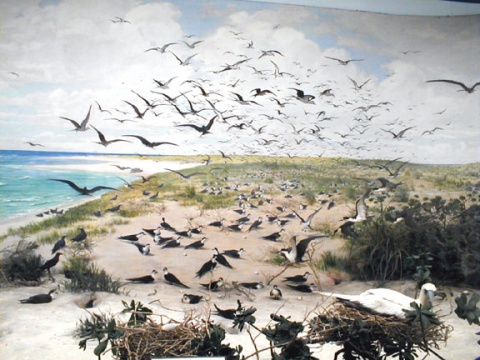Rat Island: A Book Review
When you are trying to rescue species from the very edge of extinction, you have to play hardball. This is the story of the attempts by some unique people to rescue rare creatures living on islands, by offing the predators who have invaded their habitat, like weasels, pigs, and rats – especially rats.
The book is organized historically, beginning by chronicling the efforts of Richard Henry more than a century ago in New Zealand, and does an engaging job laying the backdrop in which Henry worked. He was an uneducated outdoorsman who was disdained by the academics, but who knew more and learned more about the flightless kakapo than any other human, and would endure tough challenges for decades to try to save them. The book highlights his personal struggle by sharing how at one point he became so despondent that he shot himself in the head with his revolver, but the next day he appeared at a distant hospital requesting repairs. Amusing and awful at the same time, his story and name are still woven through the increasingly complex modern attempt to bring back this unique bird.
Rats are especially destructive on bird islands because they eat eggs, eat adults, breed prolifically, in many cases modify the habitat, and are so agile that there are few nests they cannot access. As the book continues to chronicle the efforts of rat eradication on affected islands, it delves into how the study of both the life cycles and habits of both the creatures to be rescued and the rats are important to understand vulnerabilities and craft strategies. What we and the rescuers learned is that rats have an intelligent social system, which protects them from poisons. Their local society is controlled by a king and when a new food supply appears, he hoards it and eats it himself. If he gets sick or dies soon thereafter, it is a signal to all the others to not touch the stuff. But if he is still going strong a few days later, the other rats know it is OK and proceed to also eat it.
Once industrial chemists learned of this rat behavior, they were able to come up with delayed action or “second generation” rat poisons, where the king rat rather suddenly dies a week after ingestion and the other rats have already decided it is good stuff and are marching down death row themselves. The book theme shifts to the modern world in which remote islands can be carpet bombed with the new poison pellets via helicopter, with the goal of killing every single rat – because a survivor or two could begin the infestation anew.
But of course it is often not that simple, and the real stories in this book are in the amazing details. Later chapters cover efforts to eradicate not just rats, but also feral foxes, goats, pigs, mice, and other invaders that have decimated island ecosystems around the world. It showed that as techniques improved along the learning curve – requiring detailed knowledge of the invaders’ life cycles and habits – some remarkable success stories have accrued.
I found it particularly interesting and helpful that the book also covered embarrassing moments on the learning curve. In one experiment, a single radio-collared rat was turned loose on a tiny island and a team of trained people then tried to kill him with about everything in their arsenal – including chocolate-flavored traps. After six weeks eluding his hunters, the radio collar went dead and he vanished. Later they realized he had swam a quarter mile of open ocean to a nearby island, where they then pursued him with scent-trained dogs for another six weeks. Finally the rat slipped up for a moment and got whacked in a meat-baited trap.
In the final third of the book, the author gets to share his own experiences. Rat Island is a real place in the remote Aleutian Islands and he managed to bum a berth on the vessel headed there for the biggest rat eradication up to that time, in September 2008. There are some pretty dramatic scenes – bucking 20-foot waves to get there, helicopters skimming along cliff faces dangling quarter ton buckets of rat pellets – not for the faint hearted. And in spite of all the advance research, the collateral damage was higher than expected.
The eradication and restoration projects mentioned in this book are now at least a decade old. I hope someone, perhaps William Stolzenburg again, will write a sequel about how these recoveries later unfolded and whether they became long-term solutions. I would also like to read about the more recent rescues conducted since 2011. Conservation organizations mention them briefly, usually in glowing terms, and tend not to mention the problems and the collateral damage, which is where the real lessons are to be learned. I anticipate that someday soon these lessons will begin to transfer to the continents, and not just be confined to remote islands.
Rat Island: Predators in Paradise and the World’s Greatest Wildlife Rescue



